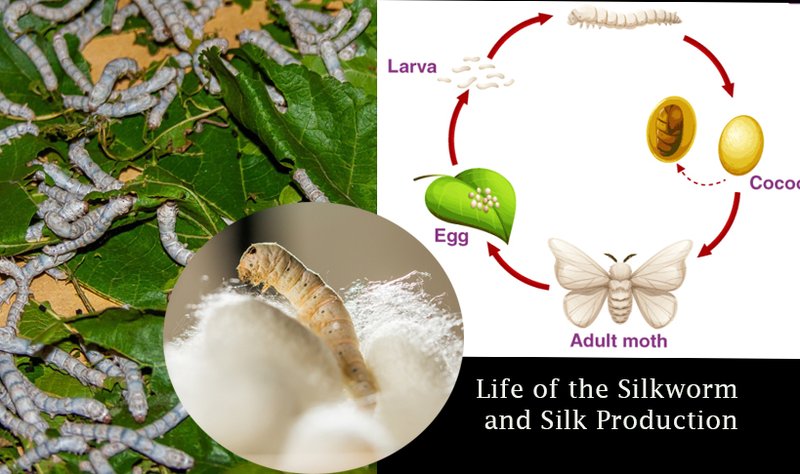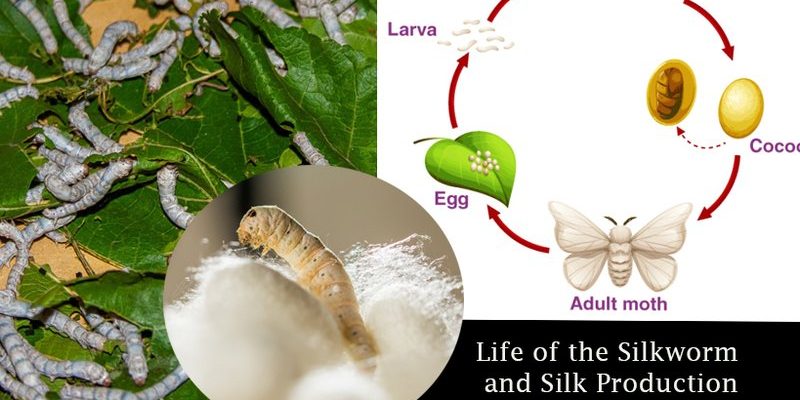
Silkworms belong to the species *Bombyx mori*, a creature deeply intertwined with human history. Think of them as the unsung heroes of the textile industry. Just like a fine wine, silk took time and craftsmanship to perfect, and it all started with these little worms munching on mulberry leaves. Let’s explore how these critters transformed the fabric landscape.
The Journey of Silkworms from Cocoon to Cloth
Silkworms undergo an incredible transformation throughout their life cycle, and it all begins with a simple egg. When temperature and humidity are just right, these eggs hatch into tiny larvae. This is the stage where the magic happens. Silkworms feast on mulberry leaves, growing rapidly, and as they do, they start producing silk.
You might be imagining a serene farm, but it’s a bit more intense than that! After about six weeks of munching and growing, the silkworms are ready to spin their cocoons. This process involves secreting a protein-based substance that solidifies into silk fibers. Each cocoon can contain over a thousand meters of silk thread. Isn’t that fascinating? It’s like watching a tiny factory at work, producing something we cherish so dearly.
Once the cocoon is complete, it is harvested. This is where the real labor of love begins. To obtain the silk, the cocoons are boiled to kill the pupa inside. While it sounds a bit harsh, this step is crucial to ensure the silk remains intact. After this, the threads are unwound, cleaned, and spun into silk fabric—ready to be dyed and woven into the luxurious materials we adore.
The Historical Origins of Silk Production
Silk has a long and illustrious history, dating back over 5,000 years in ancient China. The production of silk was a closely guarded secret for centuries. Legend has it that the Empress Leizu discovered silk when a silkworm cocoon fell into her tea. Can you imagine the surprise?
As time passed, silk became a symbol of wealth and status. It was used for everything from clothing to royal banners. The Chinese people believed they had the exclusive right to produce silk, but that didn’t last forever. By the time of the **Silk Road**, which connected the East and West, the allure of silk spread like wildfire. Merchants became savvy about trading it, making it one of the most valuable commodities of that era.
Silk production eventually made its way to places like India, Japan, and the Middle East. Each region added its unique touches, enriching the fabric’s history. The process evolved, but the essence remained the same—the silkworm quietly spinning its magic behind the scenes.
The Economic Impact of Silk on Global Trade
Silk didn’t just change fashion; it revolutionized the economy. The silk trade opened up new markets and opportunities for growth. Countries began to realize the financial potential of silk as a luxury good. It wasn’t just a fabric; it became a source of wealth.
In ancient China, silk was so valuable that it was even used as currency. Imagine paying for your groceries with a beautiful silk scarf! As the demand grew, the silk industry boomed, leading to advancements in sericulture (the cultivation of silkworms) and weaving techniques.
As silk traveled along trade routes, it also fostered cultural exchanges. Merchants from different regions interacted, sharing stories, traditions, and innovations. This not only enriched the fabric’s production but also the world’s cultural tapestry.
Silk in Fashion and Modern Textiles
Fast forward to today, and silk is still a staple in the fashion industry. You might find it in high-end clothing, ties, lingerie, and bedding. Designers love it for its luster, drape, and feel against the skin. Honestly, there’s something opulent about slipping into a silk shirt, isn’t there?
But it’s not just about luxury anymore. As sustainable fashion grows in popularity, people are also looking for ways to produce silk ethically. Brands are now exploring alternatives to traditional methods, emphasizing cruelty-free practices while still crafting beautiful fabrics. Enter *peace silk*, a method where the pupa is allowed to mature into a moth before the silk is harvested. This way, you get the softness of silk without compromising animal welfare.
Silk isn’t limited to fashion either! It’s finding its place in modern technology too. Researchers are diving into the properties of silk for use in biomedical applications. The idea of using silk proteins in sutures and drug delivery systems is exciting, highlighting this ancient material’s potential even today.
The Environmental Considerations of Silk Production
While silk has a rich history, it’s essential to address the environmental impacts of its production. Traditional silk farming can be resource-intensive. The mulberry trees require substantial water, and the boiling process can be controversial.
As consumers become more eco-conscious, there’s a growing demand for ethical and sustainable silk. This shift is encouraging producers to adopt more environmentally friendly practices. Organic farming methods, reduced water usage, and even alternatives to silk production are being explored. This way, we can still enjoy silk’s beauty while being mindful of our planet.
Silkworms hold a fascinating place in our textile history. From ancient China to today’s fashion runways, they’ve impacted how we create, trade, and appreciate fabric. Their journey from tiny caterpillars to luxurious silk is a testament to our relationship with nature and our creativity.
While the world continues to evolve, the legacy of silkworms remains strong—reminding us of the delicate balance between tradition and innovation. Whether you’re wearing silk, decorating your home with it, or marveling at its applications in technology, know that behind every strand is a story, an industry, and a little worm that made it all happen. So next time you slip on that elegant silk blouse, take a moment to appreciate the journey it took to get there.

